#NNPA BlackPress
Inglewood “wind of change”: Good or bad for community?
NNPA NEWSWIRE — Although cheaper than Hollywood or Koreatown, for the community of Inglewood, that already suffers from inequality issues, the price for housing is not affordable. According to rentcafe.com, Inglewood saw a seven percent increase from 2018 to 2019. The average rent used to be $1,654 and is now by $1,770.
By Isabell Rivera, Our Weekly Contributor
Inglewood, known to many as the mecca of local sports, hip hop culture, gang activity and long-standing inequality is receiving a wind of change. It could be considered a bigger storm for some by virtue of gentrification.
The term gentrification means, “The process of repairing and rebuilding homes and businesses in a deteriorating area such as an urban neighborhood, accompanied by an influx of middle-class or affluent people and that often results in the displacement of earlier, usually poorer residents.”
Opinions vary among residents
Opinions are split, doubts are high. All with good reason. Since Los Angeles County decided that Inglewood will be the location for Los Angeles Stadium at Hollywood Park, the new home for the Los Angeles Rams, Chargers and Clippers (scheduled for completion in 2020), the neighborhood has seen quite a difference.
Although cheaper than Hollywood or Koreatown, for the community of Inglewood, that already suffers from inequality issues, the price for housing is not affordable. According to rentcafe.com, Inglewood saw a seven percent increase from 2018 to 2019. The average rent used to be $1,654 and is now by $1,770.
“We have heard many stories about businesses closing and moving out. Several shops on our block have closed in the four years we have been here,” said Renie Schoenkerman, owner of MiddleBar. “Hard to survive with rent increases. Our staff who lives in the neighborhood has had to contend with these issues as well.”
More Whites are returning
Looking back, Inglewood wasn’t always a predominantly Black or Latino neighborhood. In the 1940s up to the late 1960s, Inglewood was a staunchly segregated White neighborhood.
However, more African-Americans moved to the city, which resulted in the familiar White flight toward the suburbs. But with change, also comes hardships, such as poverty, high crime and food deserts. But besides its issues, Inglewood was also considered the Harlem of the West, with its Jazz bars and entertainment that attracted various celebrities, such as Marilyn Monroe, and Rita Hayworth.
“Over the years, the neighborhoods are changing as more White folks move into Inglewood,” local resident and architect Christopher L. Mercier said. “It’s a funny flip on diversity as Inglewood gets more diverse. The hope is that this influx of new residents, and new businesses can quickly learn to grow into the existing culture this area has and help to grow its positive aspects with minimal displacement.”
MiddleBar owners, Renie Schoenkerman and partner Corrie Scully, have been in Inglewood since 2014 and love its diversity. The power couple, that specializes in craft cocktails and hosts pop ups, looked for a place that offered space and affordable rent.
What they’re saying on Market Street
Scully, a New Orleans native, found similarities on Market Street that is the home to many for southern comfort cooking.
‘We were on the search for a commercial kitchen when we came across our space in Inglewood. It was so cute and we saw the potential on Market St. well before the announcement of the stadium and revitalization,” Scully said. “We just felt we could bring some good hospitality to this historic neighborhood.”
Located at 129 N. Market St., MiddleBar’s mission is to grow with the change and serve the Black community, as well as the White community. But the increase of rent makes is hard for residents and business owners to stick around.
“One of our waitresses, an Inglewood resident, has seen a $500 hike in the last year alone,” Scully said. “Our rent increases at a rate of 5 percent per year and is set to go higher this year.”
Although gentrification can have a positive impact on a community, it could also result in backlash, hurting the people who have been there their entire life. Business owners and residents fear the change and plans for the new stadium will push old residents, which are mostly Black and Latino, out of the area.
Differing views of gentrification
“As business owners, we see the changes as very positive for business and communities. Overall, the vision of the new Inglewood that Mayor [James T.] Butts is promoting will bring long lasting, positive change to the city,” Schoenkerman said. “As humanists, we see the greed of landowners who hike up prices and force people out of their homes as morally corrupt.”
Despite Inglewood’s gentrification process, it’s still not Disneyland. Crime rates are still high, according to city-data.com. But does this really keep White people away from this new prime real-estate?
“At MiddleBar, our goal is to create an excellent experience in Inglewood. An experience that residents will not have to travel to Culver City or Westchester to get,” Scully said. “We focus on music, food, drink, hospitality and service. We host local artists and chefs and rent our dining room for residents’ special events. MiddleBar on Market is a community-driven, community building business that brings people together to gather with loved ones, relax, and enjoy a precious moment on earth. We aim to promote happiness.”
Sharp increase in tourism
The number of Whites moving into Inglewood is increasing dramatically. Businesses, such as Airbnb, have witnessed an increase in bookings via tourism. The so-called “Jewel of the South Bay” might actually become the next Rodeo Drive, with the nearby plans of the makeover of the Baldwin Hills Crenshaw Plaza, investors see a new mecca of opportunities.
“I think gentrification in the Inglewood/Crenshaw area is a good thing,” Mercier said, “as long as it is bracketed to focus on the existing cultural condition of that area as an opportunity to inspire what re-gentrification is. How it includes local business and local residents at the heart of its creation. Gentrification should be home grown and not transplanted if that makes any sense.”
And although hip, new places have moved to Inglewood’s busy shopping mile, Market Street, others have left. The change is sneaking up slowly, like a big, bad storm. Once the new stadium is built, things will happen quickly.
“I think there is a mixed response,” Mercier said. “Many realize the city needs the improvements and has for years. At the same time, there is tremendous fear, everyone is going to get pushed out. The recent approval of the rent control measure is a first step in helping to keep local residents in their homes. I think, more things like this need to be developed that result in some form of help to mix incoming new residents with the existing, so that the notion of a truly diverse community can really develop here in a unique way. That I think, is the real opportunity Inglewood has.”
Affordable housing a high priority
Various media outlets have reported that Inglewood residents demand affordable housing, as well as the access to healthier food options, such as a weekly farmer’s market.
Earlier this month, Butts, in support of the community, proposed an emergency ordinance to put a hold on rent increases for a 45-day period, while the city determines its next steps. In a unanimous 5-0 vote, the emergency ordinance took full effect. It prevents landlords from raising rent more than 5 percent and will prohibit the eviction of tenants for reasons other than criminal activities. However, as great as it sounds, the ordinance doesn’t count units built after 1995, including all single-family homes, condominiums and hotels. If the city needs more time to decide, the council has the option to extend the ordinance for up to one year.
“It was clear that we have to figure out something that respects the property rights of owners but gives options to tenants that can’t afford a rental increase,” Butts said. “We’ll figure out a balance between that.”
Nevertheless, the Inglewood community could possibly see more job opportunities, than are currently available.
“If gentrification can bring life to a community without forcing out the community then there is positivity. Good business, good jobs, good community,” Schoenkerman said. “It’s the greedy landlords I wish we could force out of town.”
Neighborhood culture a mainstay
On Market Street, it isn’t all about southern comfort, but also about the culture that is to be found at the nearby Residency Art Gallery at 310 E. Queen St. Owner Rick Garzon has mixed feelings about the current situation.
“I think Inglewood is already a great place to live, and has been for decades,” said Garzon, a 30-year Inglewood resident. “We would like to see more of the services that are offered in more affluent neighborhoods such as graffiti removal, better landscaping, more public art, all-inclusive city-led engagement programming and etc.”
But there’s more going on than building a new sports stadium at a projected cost of $4 billion. A little over four miles north, in the Baldwin Hills/Crenshaw neighborhood, the Baldwin Hills Crenshaw Plaza got approved for a third phase renovation project. One-tenth of the new units will be designated as moderate-income housing for those with household earnings between roughly $51,000 and $77,000, according to city officials.
However, the median household income of Inglewood is about $44,377 and the poverty rate is about 20.7 percent. The median household income in the Crenshaw District is a reported $40,042, which means majority of the local residents likely cannot afford the rent and may be forced to move to surrounding southeast neighborhoods.
Because Inglewood has so much potential to be a living, vibrant region of opportunity, assistance is needed to help the city reach its full potential. Architects such as Christopher L. Mercier are working on new ideas to make Inglewood more attractive. He has worked on the Guggenheim Museum Bilbao in Spain, among other architectural icons, and developed the idea of the Inglewood Living City Project a few years ago. A project, that would include green areas, and eco-friendly resources. Unfortunately, the idea has not found a home in the mayor’s office, just yet.
“The main piece of the puzzle in really about identity,” said Mercier, who has resided in Inglewood since 2003. “What we think about an area is an environment we create in the mind, and that in turn supports an environment of the physical world and vice-a-verse. Inglewood is already changing. The trick is to ensure that all [the] new and old residents support the existing local cultural icons and places of this community and help them to grow. Inglewood and the surrounding communities have some great and unique conditions that need to become recognized and celebrated even more as the cultural identity of the area shifts, so none of us loose the great pieces, places, and cultures that make Inglewood Inglewood.”
#NNPA BlackPress
Beloved Actor and Activist Louis Cameron Gossett Jr. Dies at 87
NNPA NEWSWIRE — Louis Gossett Jr., the groundbreaking actor whose career spanned over five decades and who became the first Black actor to win an Academy Award as Best Supporting Actor for his memorable role in “An Officer and a Gentleman,” has died. Gossett, who was born on May 27, 1936, in Brooklyn, N.Y., was 87. Recognized early on for his resilience and nearly unmatched determination, Gossett arrived in Los Angeles in 1967 after a stint on Broadway.
The post Beloved Actor and Activist Louis Cameron Gossett Jr. Dies at 87 first appeared on BlackPressUSA.
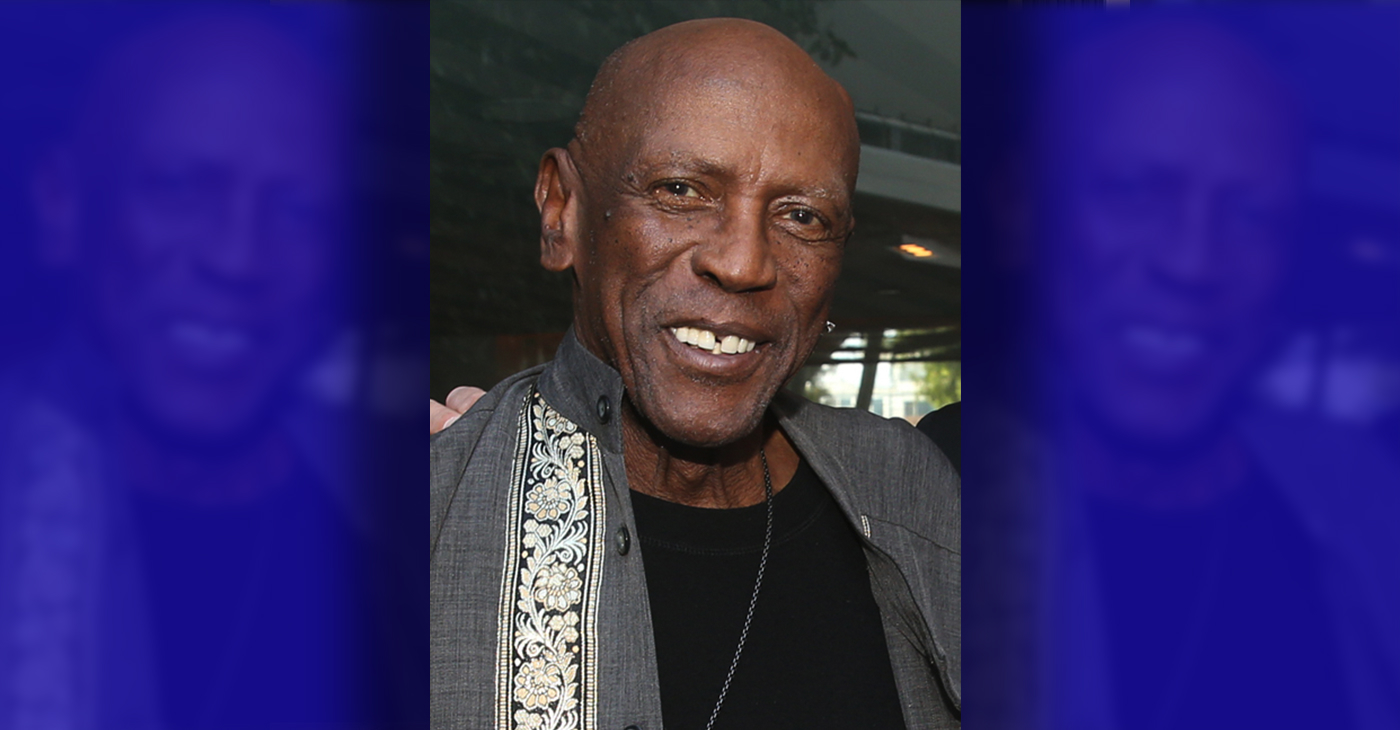
By Stacy M. Brown
NNPA Newswire Senior National Correspondent
@StacyBrownMedia
Louis Gossett Jr., the groundbreaking actor whose career spanned over five decades and who became the first Black actor to win an Academy Award as Best Supporting Actor for his memorable role in “An Officer and a Gentleman,” has died. Gossett, who was born on May 27, 1936, in Brooklyn, N.Y., was 87. Recognized early on for his resilience and nearly unmatched determination, Gossett arrived in Los Angeles in 1967 after a stint on Broadway.
He sometimes spoke of being pulled over by law enforcement en route to Beverly Hills, once being handcuffed to a tree, which he remembered as a jarring introduction to the racial tensions of Hollywood. In his memoir “An Actor and a Gentleman,” Gossett recounted the ordeal, noting the challenges faced by Black artists in the industry. Despite the hurdles, Gossett’s talent shone brightly, earning him acclaim in groundbreaking productions such as “A Raisin in the Sun” alongside Sidney Poitier. His Emmy-winning portrayal of Fiddler in “Roots” solidified his status as a trailblazer, navigating a landscape fraught with racial prejudice.
According to the HistoryMakers, which interviewed him in 2005, Gossett’s journey into the limelight began during his formative years at PS 135 and Mark Twain Junior High School, where he demonstrated early leadership as the student body president. His passion for the arts blossomed when he starred in a “You Can’t Take It With You” production at Abraham Lincoln High School, catching the attention of talent scouts who propelled him onto Broadway’s stage in “Take A Giant Step.” His stellar performance earned him the prestigious Donaldson Award for Best Newcomer to Theatre in 1952. Though initially drawn to sports, Gossett’s towering 6’4” frame and athletic prowess led him to receive a basketball scholarship at New York University. Despite being drafted by the New York Knicks in 1958, Gossett pursued his love for acting, honing his craft at The Actors Studio under the tutelage of luminaries like John Sticks and Peggy Fury.
In 1961, Gossett’s talent caught the eye of Broadway directors, leading to roles in acclaimed productions such as “Raisin in the Sun” and “The Blacks,” alongside legends like James Earl Jones, Cicely Tyson, Roscoe Lee Brown, and Maya Angelou. Transitioning seamlessly to television, Gossett graced small screens with appearances in notable shows like “The Bush Baby” and “Companions in Nightmare.” Gossett’s silver screen breakthrough came with his role in “The Landlord,” paving the way for a prolific filmography that spanned over 50 movies and hundreds of television shows. From “Skin Game” to “Lackawanna Blues,” Gossett captivated audiences with his commanding presence and versatile performances.
However, his portrayal of “Fiddler” in Alex Haley’s groundbreaking miniseries “Roots” earned Gossett critical acclaim, including an Emmy Award. The HistoryMakers noted that his golden touch extended to the big screen, where his role as Sergeant Emil Foley in “An Officer and a Gentleman” earned him an Academy Award for Best Supporting Actor, making him a trailblazer in Hollywood history.
Beyond the glitz and glamour of Hollywood, Gossett was deeply committed to community activism. In 1964, he co-founded a theater group for troubled youth alongside James Earl Jones and Paul Sorvino, setting the stage for his lifelong dedication to mentoring and inspiring the next generation. Gossett’s tireless advocacy for racial equality culminated in the establishment of Eracism, a nonprofit organization dedicated to combating racism both domestically and abroad. Throughout his illustrious career, Gossett remained a beacon of strength and resilience, using his platform to uplift marginalized voices and champion social change. Gossett is survived by his children, Satie and Sharron.
The post Beloved Actor and Activist Louis Cameron Gossett Jr. Dies at 87 first appeared on BlackPressUSA.
#NNPA BlackPress
COMMENTARY: D.C. Crime Bill Fails to Address Root Causes of Violence and Incarceration
WASHINGTON INFORMER — The D.C. crime bill and so many others like it are reminiscent of the ‘94 crime bill, which produced new and harsher criminal sentences, helped deploy thousands of police and surveilling methods in Black and brown communities, and incentivized more states to build prisons through a massive infusion of federal funding. While it is not at the root of mass incarceration, it significantly accelerated it, forcing a generation of Black and brown families into a never-ending cycle of state-sanctioned violence and incarceration.
The post COMMENTARY: D.C. Crime Bill Fails to Address Root Causes of Violence and Incarceration first appeared on BlackPressUSA.
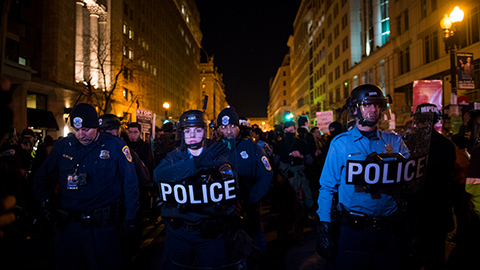
By Kaili Moss and Jillian Burford | Washington Informer
Mayor Bowser has signed the “Secure DC” omnibus bill passed by the D.C. Council last month. But we already know that this bill will be disastrous for all of D.C., especially for Black and brown residents.
While proponents claim that this legislation “will make D.C. residents safer and more secure,” it actually does nothing to address the root of the harm in the first place and instead maintains a cycle of violence, poverty, and broken community ties. The omnibus bill calls for increased surveillance, drug-free zones, and will expand pre-trial detention that will incarcerate people at a significantly higher rate and for an indeterminate amount of time before they are even tried. This bill will roll back decades of nationwide policy reform efforts and initiatives to keep our communities safe and whole, which is completely contradictory to what the “Secure” D.C. bill claims it will do.
What is unfolding in Washington, D.C., is part of a dangerous national trend. We have seen a resurrection of bad crime bills in several jurisdictions across the country — a phenomenon policy experts have named “zombie laws,” which are ineffective, costly, dangerous for communities of color and, most importantly, will not create public safety. Throwing more money into policing while failing to fund preventative measures does not keep us safe.
The D.C. crime bill and so many others like it are reminiscent of the ‘94 crime bill, which produced new and harsher criminal sentences, helped deploy thousands of police and surveilling methods in Black and brown communities, and incentivized more states to build prisons through a massive infusion of federal funding. While it is not at the root of mass incarceration, it significantly accelerated it, forcing a generation of Black and brown families into a never-ending cycle of state-sanctioned violence and incarceration. Thirty years later, despite spending billions each year to enforce these policies with many of these provisions remaining in effect, it has done very little to create long-term preventative solutions. Instead, it placed a permanent moving target on the backs of Black people, and the D.C. crime bill will do the same.
The bill calls for more pretrial detention. When our loved ones are held on pretrial detention, they are held on the presumption of guilt for an indeterminate amount of time before ever seeing a judge, which can destabilize people and their families. According to experts at the Malcolm Weimer Center for Social Policy at Harvard University, just one day in jail can have “devastating consequences.” On any given day, approximately 750,000 people are held in jails across the nation — a number that beats our nation’s capital population by about 100,000. Once detained, people run the risk of losing wages, jobs, housing, mental and health treatments, and time with their families. Studies show that pretrial detention of even a couple of days makes it more likely for that person to be rearrested.
The bill also endangers people by continuing a misguided and dangerous War on Drugs, which will not get drugs off the street, nor will it deter drug use and subsequent substance use disorders (SUDs). Drug policies are a matter of public health and should be treated as such. Many states such as Alabama, Iowa and Wisconsin are treating the current fentanyl crisis as “Crack 2.0,” reintroducing a litany of failed policies that have sent millions to jails and prisons instead of prioritizing harm reduction. Instead, we propose a simple solution: listen to members of the affected communities. Through the Decrim Poverty D.C. Coalition, community members, policy experts and other stakeholders formed a campaign to decriminalize drugs and propose comprehensive legislation to do so.
While there are many concerning provisions within the omnibus bill, car chases pose a direct physical threat to our community members. In July 2023, NBC4 reported that the D.C. Council approved emergency legislation that gave MPD officers the ability to engage in vehicular pursuits with so-called “limited circumstances.” Sgt. Val Barnes, the head of MPD’s carjacking task force, even expressed concern months before the decision, saying, “The department has a pretty strict no-chase policy, and obviously for an urban setting and a major metropolitan city, that’s understandable.” If our law enforcement officers themselves are operating with more concern than our elected officials, what does it say about the omnibus bill’s purported intention to keep us safe?
And what does it mean when the risk of bodily harm is posed by the pursuit itself? On Saturday, Feb. 10, an Eckington resident had a near-miss as a stolen car barreled towards her and her dog on the sidewalk with an MPD officer in pursuit. What responsibility does the city hold if this bystander was hit? What does restitution look like? Why are our elected officials pushing for MPD officers to contradict their own policies?
Just a few summers ago during the uprisings of 2020, we saw a shift in public perspectives on policing and led to legislation aimed at limiting police power after the highly-publicized murders of loved ones Breonna Taylor and George Floyd — both victims of War on Drugs policing and the powers gained from the ’94 crime bill. And yet here we are. These measures do not keep us safe and further endanger the health of our communities. Studies show that communities that focus on harm reduction and improving material conditions have a greater impact on public safety and community health. What’s missing in mainstream conversations about violent crime is the violence that stems from state institutions and structures that perpetuate racial and class inequality. The people of D.C. deserve to feel safe, and that includes feeling safe from the harms enacted by the police.
Kaili Moss is a staff attorney at Advancement Project, a national racial justice and legal organization, and Jillian Burford is a policy organizer at Harriet’s Wildest Dreams.
The post COMMENTARY: D.C. Crime Bill Fails to Address Root Causes of Violence and Incarceration first appeared on BlackPressUSA.
#NNPA BlackPress
Mayor, City Council President React to May 31 Closing of Birmingham-Southern College
THE BIRMINGHAM TIMES — “This is a tragic day for the college, our students, our employees, and our alumni, and an outcome so many have worked tirelessly to prevent,” Rev. Keith Thompson, chairman of the BSC Board of Trustees said in an announcement to alumni. “We understand the devastating impact this has on each of you, and we will now direct our efforts toward ensuring the smoothest possible transition for everyone involved.”
The post Mayor, City Council President React to May 31 Closing of Birmingham-Southern College first appeared on BlackPressUSA.
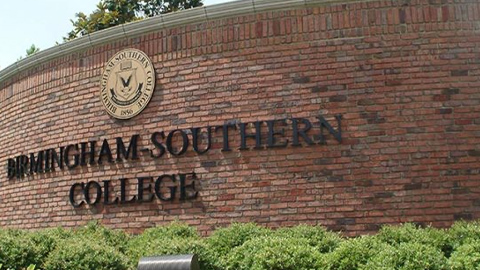
By Barnett Wright | The Birmingham Times
Birmingham-Southern College will close on May 31, after more than a century as one of the city’s most respected institutions.
“This is a tragic day for the college, our students, our employees, and our alumni, and an outcome so many have worked tirelessly to prevent,” Rev. Keith Thompson, chairman of the BSC Board of Trustees said in an announcement to alumni. “We understand the devastating impact this has on each of you, and we will now direct our efforts toward ensuring the smoothest possible transition for everyone involved.”
There are approximately 700 students enrolled at BSC this semester.
“Word of the decision to close Birmingham Southern College is disappointing and heartbreaking to all of us who recognize it as a stalwart of our community,” Birmingham Mayor Randall Woodfin said in a statement. “I’ve stood alongside members of our City Council to protect this institution and its proud legacy of shaping leaders. It’s frustrating that those values were not shared by lawmakers in Montgomery.”
Birmingham City Council President Darrell O’Quinn said news of the closing was “devastating” on multiple levels.
“This is devastating for the students, faculty members, families and everyone affiliated with this historic institution of higher learning,” he said. “It’s also profoundly distressing for the surrounding community, who will now be living in close proximity to an empty college campus. As we’ve seen with other institutions that have shuttered their doors, we will be entering a difficult chapter following this unfortunate development … We’re approaching this with resilience and a sense of hope that something positive can eventually come from this troubling chapter.”
The school first started as the merger of Southern University and Birmingham College in 1918.
The announcement comes over a year after BSC officials admitted the institution was $38 million in debt. Looking to the Alabama Legislature for help, BSC did not receive any assistance.
This past legislative session, Sen. Jabo Waggoner sponsored a bill to extend a loan to BSC. However, the bill subsequently died on the floor.
Notable BSC alumni include former New York Times editor-in-chief Howell Raines, former U.S. Sen. Howell Heflin and former Alabama Supreme Court Chief Justice Perry O. Hooper Sr.
This story will be updated.
The post Mayor, City Council President React to May 31 Closing of Birmingham-Southern College first appeared on BlackPressUSA.
-

 Activism4 weeks ago
Activism4 weeks agoOakland Post: Week of March 20 – 26, 2024
-

 #NNPA BlackPress3 weeks ago
#NNPA BlackPress3 weeks agoCOMMENTARY: D.C. Crime Bill Fails to Address Root Causes of Violence and Incarceration
-

 #NNPA BlackPress4 weeks ago
#NNPA BlackPress4 weeks agoFrom Raids to Revelations: The Dark Turn in Sean ‘Diddy’ Combs’ Saga
-

 #NNPA BlackPress3 weeks ago
#NNPA BlackPress3 weeks agoMayor, City Council President React to May 31 Closing of Birmingham-Southern College
-

 #NNPA BlackPress4 weeks ago
#NNPA BlackPress4 weeks agoCOMMENTARY: Lady Day and The Lights!
-

 Activism3 weeks ago
Activism3 weeks agoOakland Post: Week of March 27 – April 2, 2024
-

 #NNPA BlackPress4 weeks ago
#NNPA BlackPress4 weeks agoBaltimore Key Bridge Catastrophe: A City’s Heartbreak and a Nation’s Alarm
-

 #NNPA BlackPress4 weeks ago
#NNPA BlackPress4 weeks agoBaltimore’s Key Bridge Struck by Ship, Collapses into Water

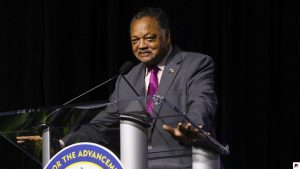
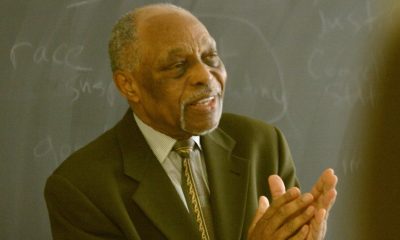





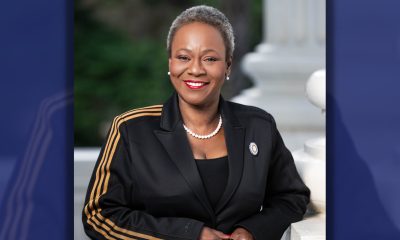








































1 Comment